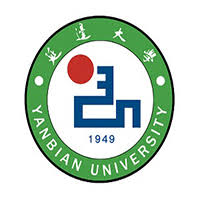The Constitution is a fundamental document that outlines the fundamental principles, rules, and procedures that govern a nation or state. It is a legal framework that establishes the structure and operation of the government, defines the rights and obligations of citizens, and establishes the relationship between the state and its citizens.
Study more government keypoints here
In this government class note, we will discuss the meaning, sources, functions, types, and advantages and disadvantages of the Constitution.
Meaning of Constitution
The term constitution is derived from the Latin word ‘constitutio,’ which means a regulation, law, or ordinance. The Constitution is a written or unwritten document that serves as the supreme law of the land. It sets out the basic rules and principles that govern the government and its citizens.
Sources of Constitution
There are several sources of the Constitution. These include:
- Statutory sources: These are the laws and regulations that have been enacted by the legislative body of a country.
- Judicial sources: These are the decisions made by the courts that interpret the Constitution and determine its meaning.
- Conventional sources: These are the customs, traditions, and practices that have developed over time and have been accepted as part of the Constitution.
Functions of Constitution
The Constitution performs several functions. These include:
- It establishes the fundamental principles and values that govern the state and its citizens.
- It defines the powers and functions of the government and its branches.
- It protects the fundamental rights and freedoms of citizens.
- It establishes the procedures for making laws and enforcing them.
- It provides a framework for resolving conflicts between different branches of government.
Types of Constitution
There are four types of constitutions. These include: Study more government keypoints here
Written Constitution:
This is a constitution that is codified in a single document or a series of documents. It is usually adopted after a period of extensive debate and discussion, and its provisions can only be changed through a formal amendment process.
Advantages:
- Clarity and certainty of rules
- Easy to understand and access
- Provides a clear framework for governance
- It is a formal document that can be referred to in legal disputes
- It serves as a tool for limiting the power of the government.
Disadvantages:
- It is often rigid and difficult to amend
- It may not be suitable for all types of governments
- It may not reflect the changing needs of society over time
- It can lead to legalistic interpretations of the constitution
- It can be difficult to reach a consensus on the content of a written constitution.
Features:
- Written in a single document or series of documents
- Codified rules and principles
- Formal amendment process
- Provides clarity and certainty of rules
- Typically adopted after extensive debate and discussion.
Unwritten Constitution:
This is a constitution that is not codified in a single document but is based on a combination of laws, customs, and conventions. It is usually flexible and can be changed through informal means, such as changes in customs or conventions.
Advantages:
- It is flexible and can adapt to changing circumstances
- It is not limited by a formal amendment process
- It can reflect the customs and traditions of society
- It can be easier to amend than a written constitution
- It can be more easily interpreted and applied by the courts.
Disadvantages:
- It may lack clarity and certainty of rules
- It may be subject to differing interpretations
- It may be difficult to access and understand
- It may not provide a clear framework for governance
- It may be based on outdated or discriminatory customs.
Features:
- Not codified in a single document
- Based on a combination of laws, customs, and conventions
- Flexible and adaptable
- Can be changed through informal means
- May lack clarity
Rigid Constitution:
A rigid constitution is one that is difficult to amend or change. It usually requires a special process or procedure to make changes to the constitution, such as a supermajority vote in the legislature or a referendum.
Advantages:
- Provides stability and consistency in governance
- Protects fundamental rights and freedoms from being easily changed or removed
- Ensures that changes to the constitution are carefully considered and debated
- Helps to prevent the abuse of power by the government
- Provides a clear framework for governance.
Disadvantages:
- It can be difficult to make necessary changes to the constitution
- It may not be able to adapt to changing circumstances or needs
- It can lead to rigidity and inflexibility in governance
- It can lead to a lack of responsiveness to changing social, economic, or political conditions
- It can be a slow and cumbersome process to amend the Constitution.
Features:
- Difficult to amend or change
- Special process or procedure required for amendments
- Provides stability and consistency in governance
- Protects fundamental rights and freedoms
- Helps to prevent the abuse of power by the government.
Flexible Constitution:
A flexible constitution is one that can be easily amended or changed. It usually allows for changes to be made through a simple legislative process or other informal means.
Advantages:
- It can adapt to changing circumstances or needs
- It can be responsive to changing social, economic, or political conditions
- It can be amended quickly and easily to reflect the will of the people
- It can reflect the changing needs of society over time
- It can provide a more democratic and participatory process for making changes to the Constitution.
Disadvantages:
- It may lack stability and consistency in governance
- It may not provide sufficient protection for fundamental rights and freedoms
- It may be subject to abuse by the government or special interest groups
- It can lead to instability and uncertainty in governance
- It may not provide a clear framework for governance.
Features:
- Easily amended or changed
- Allows for changes through the simple legislative process or other informal means
- Adapts to changing circumstances or needs
- Responsive to changing social, economic, or political conditions
- Provides a democratic and participatory process for making changes to the Constitution.
Conclusion
In conclusion, the Constitution is a fundamental document that establishes the basic rules and principles that govern a nation or state. There are four types of constitutions: written, unwritten, rigid, and flexible. Each type has its own advantages and disadvantages and features that make it unique. It is important to understand the different types of constitutions and their characteristics to appreciate the role they play in governance.








